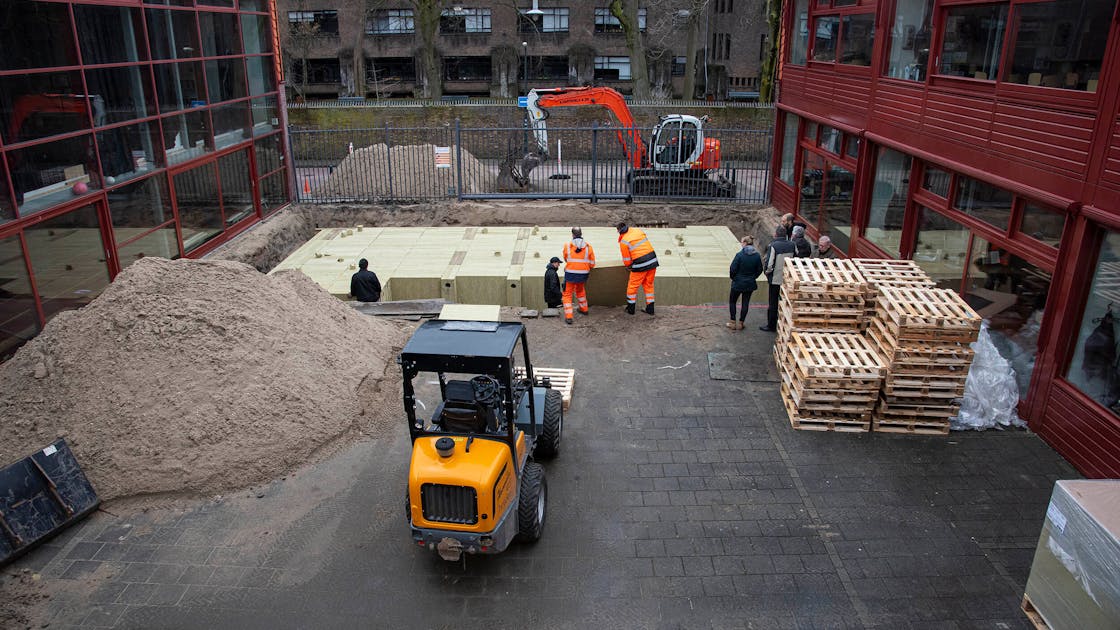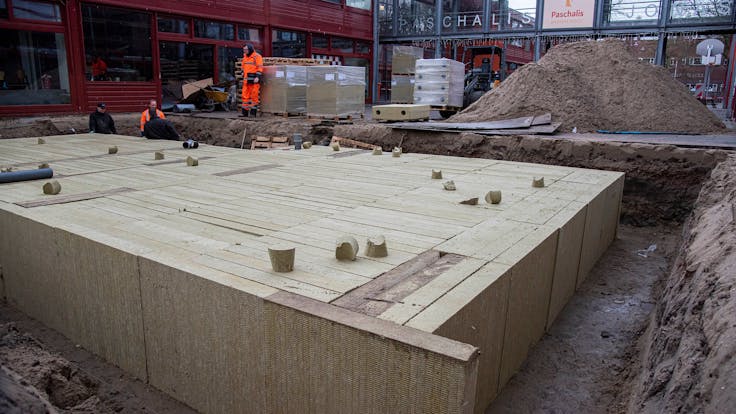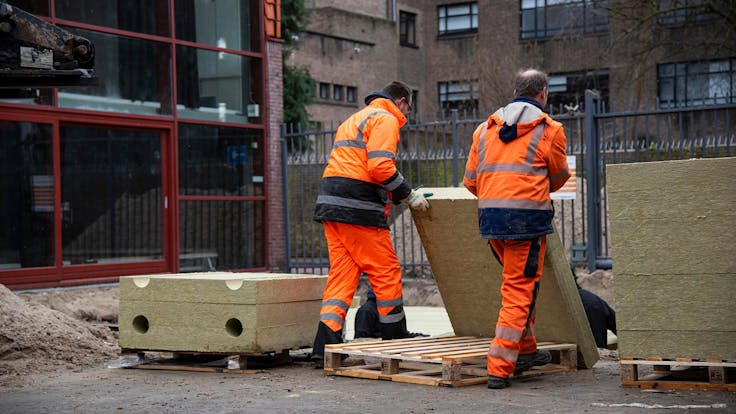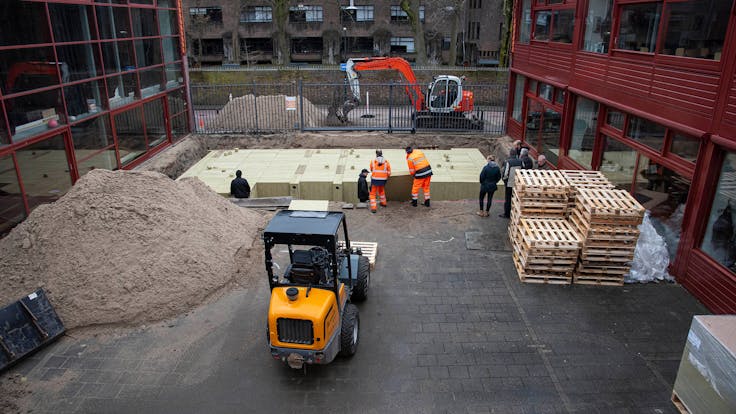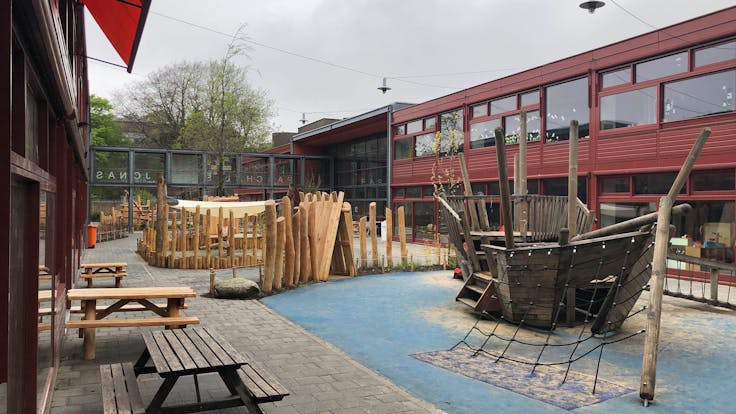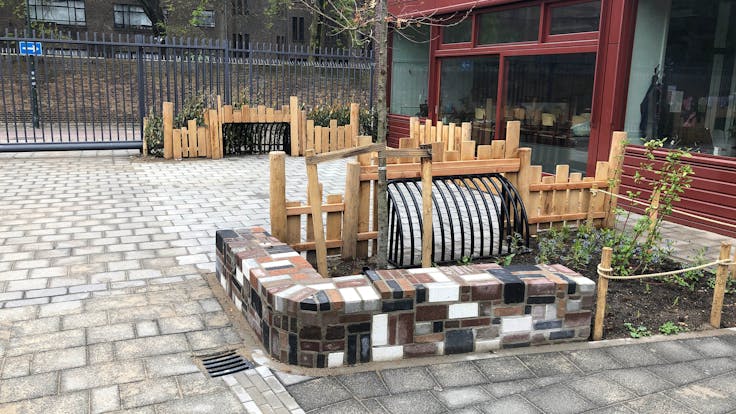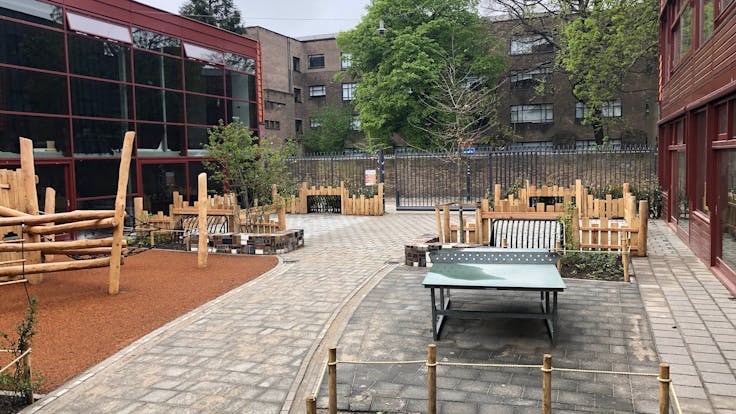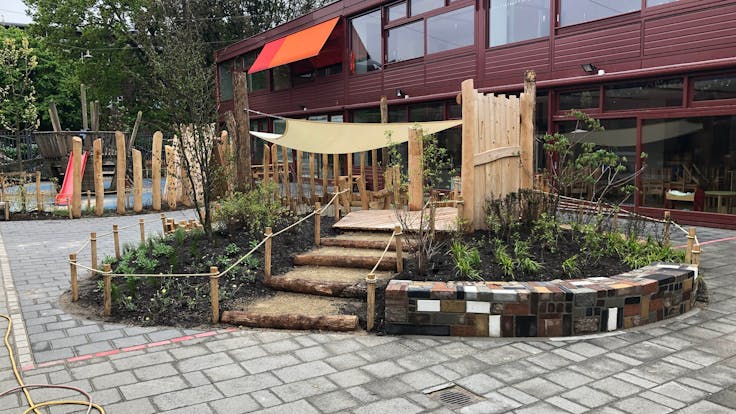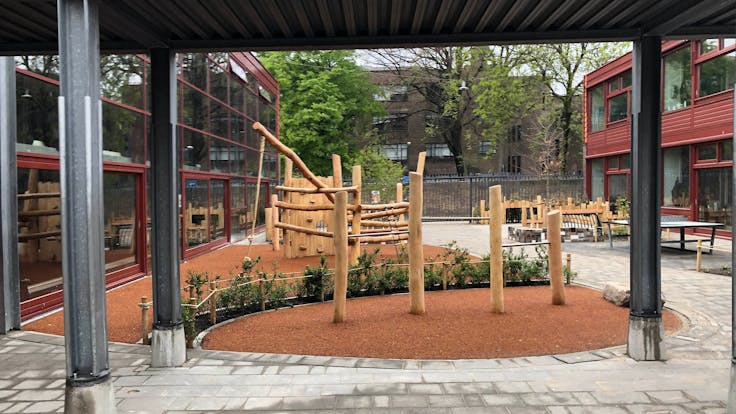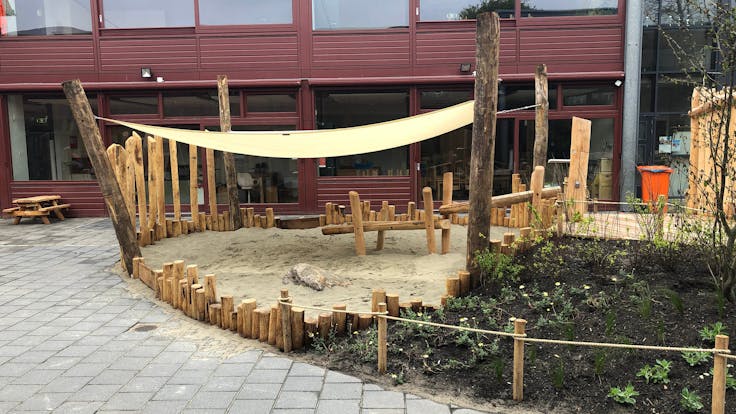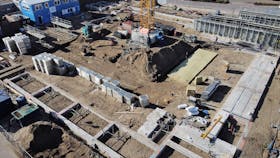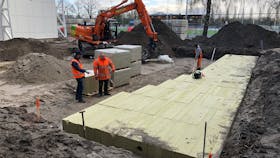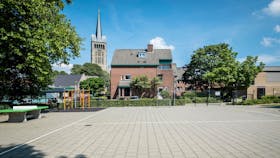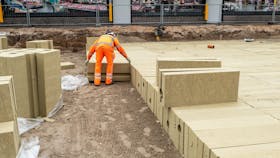Rockflow water infiltration as a practical, sustainable measure against local flooding
Climate adaptation and challenging play
“Two things triggered us. Two years ago the student council asked for extra, more varied play options in the playground because they could really only play football or hockey. Added to this, it was often too warm in the summer because of the sun baking the paving all day. Another aspect was that large puddles of water stayed on the playground whenever it rained hard.” This is according to Margo van Holthe, head of the Paschalis primary school in the Hague, talking about their motivation for redesigning the school playground, previously covered mostly in concrete paving. When the playground was likely to be dug up due to sewage problems, the school saw this as the perfect time to put the ideas into practice. After contacting the Delfland Water Authority and the City of The Hague, a plan was conceived to make the playground green-blue, i.e. incorporating as many climate adaptation measures as possible during the redesign.
We engaged Bureau RIS, all of whose projects are based on climate adaptation, biodiversity and a healthy living environment. As a first step, the agency interviewed the end users: the pupils. “Of course, the children’s first ideas were wild, ranging from a log flume to a cable car from one side of the playground to the other”, says Margo van Holthe. “After discussing it in more depth, they realised themselves these ideas are impractical. This is how we eventually reached a design with play elements that encourage movement, a sand and water play area and panna street football courts.” These ideas formed the basis for the design that was implemented in the spring of 2020. Donny Thieme, Bureau RIS explains that “Sustainability is an important aspect here. Even when we selected a landscape gardener, we incorporated their vision on sustainability. In this project we wanted to use the expertise of the collaborating parties to move towards a more sustainable school.” Landscape gardeners Van der Heijden from Den Hoorn were therefore commissioned to implement the plan, resulting in a school playground with plenty of greenspace, challenging all age groups to take part in sport and play activities.
